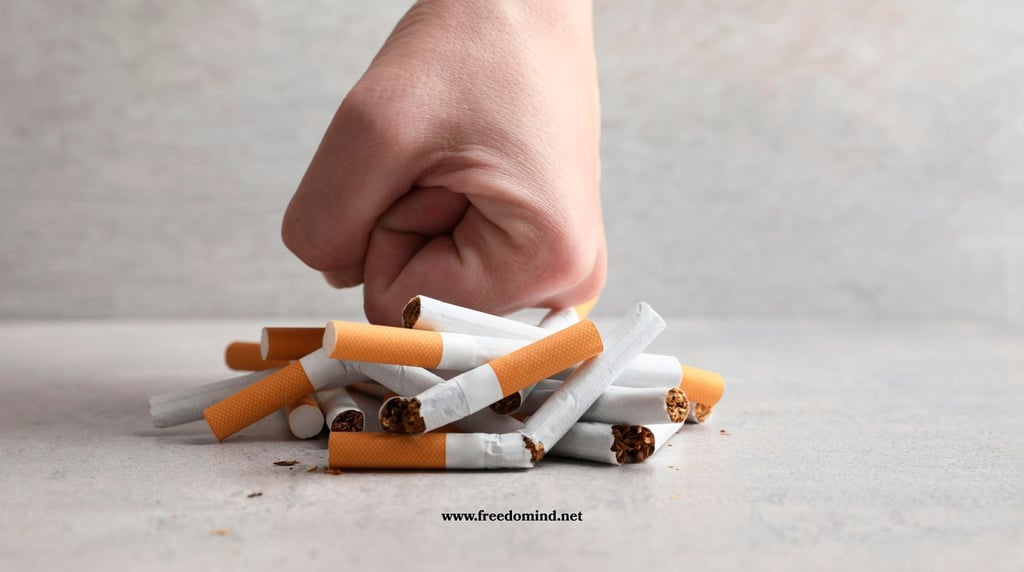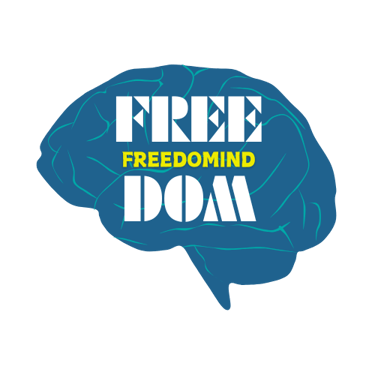Unhook from Nicotine: The Alkaline Secret to Quit Smoking
Discover the real reason quitting smoking feels so hard—and how to make it easier. In this eye-opening guide, we reveals a 7-step, science-backed method to quit smoking by targeting both physical and psychological addiction. Whether you’ve tried quitting before or are starting fresh, this method offers a refreshing path to finally break free from nicotine—for good.
MENTAL HEALTH
Jessica Ao | Hypnotherapist and Nutrition Coach
7/22/20254 min read


Are you ready to break free from smoking and reclaim control over your life?
Quitting smoking is often seen as an uphill battle, rivaling the challenge of overcoming alcohol, drugs, or even sugar addiction. But what if it could be more manageable than you expect?
As a hypnotherapist with a decade of experience helping clients conquer nicotine dependence, I’ve witnessed transformative results. In this blog, I’ll reveal a science-backed, step-by-step system blending biology, behavior, and nutrition to guide you toward a smoke-free life.
The Hidden Drivers of Smoking Addiction
Most people believe nicotine is the sole culprit behind smoking addiction. While tobacco companies design cigarettes to maximize addictiveness, the real drivers go beyond nicotine alone. To quit effectively, we must tackle both physical and psychological addiction.
The Physical Addiction
The Alkaline Connection
Our modern diets and lifestyle, rich in processed foods, caffeine, and stress, create a chronically acidic internal environment. To counter this, the body craves balance. When tobacco burns, it releases free-base nicotine, which is more rapidly absorbed through the lungs and briefly raises brain pH, potentially enhancing its stimulating effects and reinforcing addiction (Pankow, 2001). While research on this mechanism is ongoing, this brief balance fuels a cycle of cravings as the body becomes more acidic post-cigarette, pulling you back for another hit.
The Adrenaline Surge
Smoking triggers the release of adrenaline, a stress hormone that suppresses appetite and heightens alertness, explaining why many smokers feel focused or even slimmer. Nicotine’s ability to stimulate adrenaline makes smoking physically and mentally reinforcing, especially under stress (Benowitz, 2008). Notice how your body feels before and after a cigarette, you’ll likely recognize the adrenaline rush. The first puff after a delay, like after a meeting or a flight, delivers a double hit: alkaline stimulation and an adrenaline jolt, making it feel nearly irresistible.
The Psychological Addiction
Smoking is also an emotional and behavioral loop. Stress, boredom, social pressure, or routines—like lighting up with your morning coffee—strengthen psychological dependency. For many, the smell of coffee or a work break instantly signals “time to smoke.” Research confirms that external triggers and mental associations powerfully influence cravings (Carter et al., 2015; Conklin et al., 2010). This is why willpower alone often falls short.
A Science-Backed 7-Step Method to Quit Smoking
This method targets both physical and psychological addiction. Instead of quitting cold turkey, which often leads to relapse (Hughes et al., 2004), it uses gradual tapering, shown to improve success rates (Lindson-Hawley et al., 2016). It rewires your habits, balances your body chemistry, and restores your brain’s natural reward system.
Step 1: Identify Your Triggers
List the times, places, and emotions that spark your cravings—commutes, after meals, social settings, or stress. Awareness is key, as environmental cues play a major role in sustaining addiction (Conklin et al., 2010).
Step 2: Replace 10 Cigarettes with Dark Chocolate
If you smoke 20 cigarettes a day, replace half with 10 pieces of high-quality dark chocolate (70%+ cocoa). Keep chocolate handy as a satisfying ritual to replace the sensory experience of smoking. Dark chocolate contains theobromine, a mild stimulant that mimics some of smoking’s pleasurable effects without the toxins (Smit et al., 2004
Step 3: Add Deep Breathing
When cravings hit, take three slow, deep breaths to calm your nervous system, then slowly eat a piece of chocolate, letting it melt in your mouth. Deep breathing activates the parasympathetic nervous system, reducing adrenaline and cravings (Jerath et al., 2006). Use this during your usual smoking times, like breaks or while driving.
Step 4: Disrupt Your Smoking Pattern
Smoke the remaining cigarettes only while walking and at odd times, not during usual routines like sitting with coffee. This disrupts your brain’s automatic link between routines and smoking (Wood & Neal, 2007).
Step 5: Gradually Cut Back
After 1–2 weeks, cut both chocolates and cigarettes in half. Gradual tapering reduces withdrawal symptoms and boosts long-term success (Lindson-Hawley et al., 2016).
Step 6: Eliminate Cigarettes
By week three, stop smoking entirely and rely on dark chocolate and breathing for satisfaction and calm. This reward substitution technique helps your brain transition without feeling deprived (Shiffman et al., 2004).
Step 7: Transition to Breathing Alone
Finally, reduce chocolate and rely on deep breathing and a supportive diet. This trains your brain to relax and feel balanced without external stimulants.
The Role of Nutrition in Quitting
A diet rich in fruits and vegetables helps restore your body’s natural pH balance and reduces cravings. Alkaline-forming foods like leafy greens, berries, and citrus—try a smoothie with spinach, berries, and lemon—can enhance mood and reduce withdrawal symptoms (Prochaska & Benowitz, 2019). This supports long-term cessation by stabilizing your body and mind.
Why This Method Works
Targets alkaline-acid loop behind physical cravings
Calms adrenaline and stress
Rewires automatic habits
Uses reward substitution instead of deprivation
Strengthens your body through nutrition
Ready to Break Free?
You don’t have to quit alone. As an addiction expert, I offer personalized one-on-one coaching that blends proven addiction science with nutritional and behavioral support. Together, we’ll create a tailored plan to unhook you from nicotine and build a healthier, smoke-free future.
Book Your Free Consultation Today
Want more tools to conquer addiction and transform your life?
Visit www.freedomind.net for practical, science-backed guidance. Join me on the journey to break free from smoking and embrace a life of vitality and freedom.
References
Benowitz, N. L. (2008). Neurobiology of nicotine addiction: Implications for smoking cessation treatment. American Journal of Medicine, 121(4), S3–S10.
Carter, B. L., Lam, C. Y., Robinson, J. D., et al. (2015). Environmental stimuli and craving in smokers: A meta-analysis. Nicotine & Tobacco Research, 17(12), 1413–1420.
Conklin, C. A., Robin, N., Perkins, K. A., et al. (2010). Proximal versus distal cues to smoke: The effects of environments on smokers’ cue-reactivity. Experimental and Clinical Psychopharmacology, 18(3), 207–213.
Hughes, J. R., Keely, J., & Naud, S. (2004). Shape of the relapse curve and long-term abstinence among untreated smokers. Addiction, 99(1), 29–38.
Jerath, R., Edry, J. W., Barnes, V. A., & Jerath, V. (2006). Physiology of long pranayamic breathing: Neural respiratory elements may provide a mechanism that explains how slow deep breathing shifts the autonomic nervous system. Medical Hypotheses, 67(3), 566–571.
Lindson-Hawley, N., Aveyard, P., & Hughes, J. R. (2016). Gradual versus abrupt smoking cessation: A randomized, controlled noninferiority trial. Annals of Internal Medicine, 164(9), 585–592.
Pankow, J. F. (2001). A consideration of the role of gas/particle partitioning in the deposition of nicotine and other tobacco smoke constituents in the respiratory tract. Chemical Research in Toxicology, 14(11), 1465–1481.
Prochaska, J. J., & Benowitz, N. L. (2019). Current avances in research in treatment and recovery: Nicotine addiction. Science Advances, 5(10), eaay9763.
Shiffman, S., Gwaltney, C. J., Balabanis, M. H., et al. (2004). Immediate antecedents of cigarette smoking: An analysis from ecological momentary assessment. Journal of Abnormal Psychology, 111(4), 531–545.
Smit, H. J., Gaffan, E. A., & Rogers, P. J. (2004). Methylxanthines are the psycho-pharmacologically active constituents of chocolate. Psychopharmacology, 176(3–4), 412–419.
Wood, W., & Neal, D. T. (2007). A new look at habits and the habit-goal interface. Psychological Review, 114(4), 843–863.
© 2017-2025 Freedomind LLC All Rights Reserved.
Use of this website, content, and products are for informational and educational purposes only.
We do not provide medical advice, diagnosis, or treatment.
For more information, please read our Terms and Conditions and Disclaimer.
